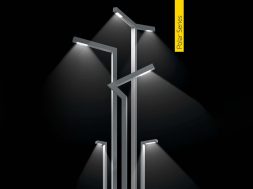Future of construction with a net-zero impact

Innovative low-carbon construction materials developed using 3D printing technology can now be used for carbon sequestration and utilisation to reduce carbon emissions in the building industry are in line with the National “net-zero” targets by 2070.
India’s cement and brick industries produce an astounding 200–250 million tonnes of carbon dioxide (CO2) per year; this is a problem that will only get worse as the nation strives for “net-zero” emissions. Two key objectives are necessary to achieve sustainable, low-carbon construction: lowering the amount of CO2 emissions known as “embodied carbon,” which comes from the manufacture of materials, and minimising the use of mined resources. Prominent in this inventive undertaking is the notion of “accelerated carbonation curing.” By mineralising carbonates in building materials, this procedure uses CO2-rich industrial flue gases to produce a stable and long-lasting method of CO2 storage.
Researchers at the Indian Institute of Science (IISc), Bengaluru, have developed ground-breaking materials and processes under a multilateral project called Acronym 3D Printing. The project is funded jointly by the Department of Science and Technology (DST) under the transnational platform of Accelerating CCUS Technologies, and it represents a significant step towards sustainable construction. To sequester carbon, the Centre for Sustainable Technologies at IISc Bengaluru has used 3D printable material formulations made from industrial byproducts like fly ash, blast furnace slag, and construction and demolition wastes (also known as CDW).
Utilising industrial by-products such as fly ash, blast furnace slag, and building and demolition wastes (CDW), 3D printable material formulations have been produced. These mixtures could be employed in the construction of walls, slabs, and other structural elements. The proposed material can store 35–40 per cent of CO2 by mass of cement through the use of an optimised accelerated carbonation curing method. The precise amount varies depending on mixture formulation, density, and curing circumstances. The development of tiny carbonate mineral crystals during the sequestration process is an extra advantage that improves the material’s technical performance.
In perfect harmony with the DST-CCUS and Accelerating CCS Technologies programmes, the 3D printing team is spearheading the creation of low-carbon building materials that can absorb significant amounts of CO2 from industrial streams. The Indian Institute of Technology, Roorkee, Sandia National Laboratories (USA), and Oregon State University (USA) are members of the bilateral Indo-US cooperation, which is led by IISc Bengaluru. To maximise carbon sequestration while enhancing strength and durability, the consortium is attempting to bring together advances in the design of building components via additive manufacturing, or 3D printing, and the discovery of new materials and methods.
The Journal of Construction and Building Materials has published the research conducted by the IISc team. This development in 3D printing materials has the potential to be a sustainable replacement for up to 75 percent of natural sand in cement-based building materials. Notably, this invention provides a technique to minimise the extraction of mined resources, such as Portland cement and natural aggregates, and lessen dependency on energy-intensive steam curing. In addition to making buildings “carbon sinks,” this technique solves problems related to the handling of construction and demolition waste (also known as CDW) and other by-products. To speed up the technology’s scaling-up process and investigate direct CO2 sequestration prospects from flue streams, the collaboration is currently actively interacting with the industry.
Carbon sequestration leads to the formation of carbonate minerals in the bulk matrix and pores of the created 3D-printed material (IISc, Bangalore). The 3–5 micrometre crystals thicken the material matrix because of their size.
For more info visit : https://dst.gov.in/transforming-construction-low-carbon-future
Cookie Consent
We use cookies to personalize your experience. By continuing to visit this website you agree to our Terms & Conditions, Privacy Policy and Cookie Policy.






